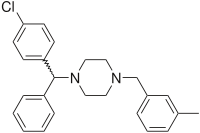
Photo from wikipedia
The time-modulated array (TMA)-based space-division multiple access (SDMA) approach is studied and verified, including the performance analysis and experimental verification. It utilizes the multibeam characteristic of TMA to implement the… Click to show full abstract
The time-modulated array (TMA)-based space-division multiple access (SDMA) approach is studied and verified, including the performance analysis and experimental verification. It utilizes the multibeam characteristic of TMA to implement the SDMA. For the uplink, the main power of signals with different incident angles would be redistributed to different harmonic components after time modulation. In this case, it plays a key role in this system to determine the harmonic order, which is selected to detect the received signal. A novel harmonic selection method for the uplink TMA-based SDMA systems is proposed by maximizing the received signal power. Furthermore, a closed-form expression of the spectral efficiency is deduced to verify the advantage of the simple harmonic selection scheme. Numerical results show that the TMA-based SDMA system can significantly improve the spectral efficiency compared with traditional single radio frequency (RF) chain systems. Meanwhile, it does not increase the number of RF chains. An $L$ -band eight-element TMA is fabricated and tested to validate the feasibility of the TMA-based SDMA method.
Journal Title: IEEE Transactions on Antennas and Propagation
Year Published: 2021
Link to full text (if available)
Share on Social Media: Sign Up to like & get
recommendations!